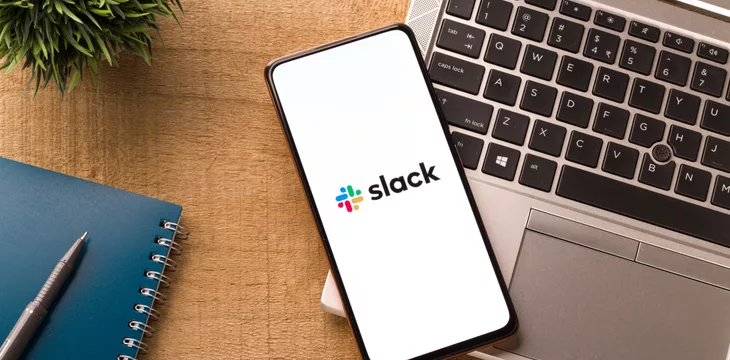|
Getting your Trinity Audio player ready...
|
I was never a big fan of Slack. In my opinion, the generally unorganized flow of conversation on that platform never really made it a great tool for a team to have conversations. It always seemed to be a bit better for one-to-one messaging, similar to Discord…not to mention that the default sound of a Slack message is one of the most jarring noises your ears can hear after you’ve used the platform for quite a while.
I don’t seem to be the only one with that view about Slack either; it seems that the company has identified the areas where its platform needed improvement and implemented a variety of artificial intelligence (AI)-powered tools to improve the user experience.
Slack’s new AI features, which the company calls “Slack AI,” promise to significantly reduce the time employees spend catching up on and understanding previously communicated information. They do this through several features that allow users to search for answers, get recaps of conversations, and receive summaries of threads more efficiently. These changes are a move away from the traditionally manual processes of retrieving information and making sense of it. They represent a move into a more automated experience that streamlines how we work.
A data-driven decision
My personal negative experiences with Slack seem to be a somewhat common problem that employees have when doing work virtually. A report from Gartner found that 47% of digital workers struggle to find the information they need, and 32% of employees have made the wrong decision due to a lack of awareness. Unorganized and unstructured data—the format information often comes in on Slack—are contributors to these problems, and beyond that, it takes employees significant amounts of time to organize and structure that data into actionable insights and information.
With these pain points and problems in mind, Slack created a set of solutions designed to mitigate these challenges. By providing tailored answers, summarizing conversations, and highlighting key information from channels, Slack AI aims to enhance productivity by aggregating information to make critical information more accessible and easier to digest. Companies that were part of the pilot for Slack AI, including SpotOn, Uber (NASDAQ: UBER), and Anthropic, reported that they were able to save an average of 97 minutes per user each week using Slack AI to find answers.
How AI will actually be used in the workplace
Although the media talks about AI entirely replacing humans in the workplace and putting people out of work, that scenario is highly unlikely in the near future. The reality is that the infrastructure and implementation costs of AI systems can be prohibitively expensive for many companies, a recent report from MIT discovered.
What is much more likely at this point is AI tools, like the suite of tools produced by Slack, being used by employees to increase productivity; in these scenarios, AI is more of an ally than a replacement.
AI isn’t new, so what’s changed?
What we have been seeing unfold over the last two years is a boom in generative AI for consumers. AI is not a new technology, and many individuals have been working in this field for multiple decades, but what is new is the variety of AI products and services that have become accessible and easy to use by the average person.
This is a crucial step when it comes to mass adoption. As we often see in industries that are sometimes overly technical and academic, they tend to be inaccessible to the group their creators would call their target audience. This is because the innovations require a certain level of technical know-how that is needed to operate these systems.
This adds a degree of difficulty regarding the products and services at hand. When it comes to adoption, especially one that requires a user to switch from an existing alternative that they would say works perfectly fine, any friction could—and probably will—prevent someone from becoming a user or a paying client or customer.
This is why it is important to make new products and services as accessible and usable as possible, which AI providers were able to do via generative AI chatbots that offered a similar/familiar user experience to consumers while significantly increasing productivity and the efficiency of completing the tasks they set out to complete.
The race to integrate AI into everyday life
Right now, there is a spotlight on AI for consumers, whether that be AI use cases in the workplace like Slack has just released or AI wearables that are looking to seamlessly integrate AI into people’s daily lives. Many AI providers are also looking to get AI into the hands of consumers and be the go-to app that consumers lean on when it comes to searching for things on the internet, consulting on niche subjects, and optimizing items they have already created.
As usual, when household names like Slack make moves, I suspect that they are watched with the intention of being replicated by others operating in similar industries looking to bring similar value and increase efficiency and productivity to their users.
In order for artificial intelligence (AI) to work right within the law and thrive in the face of growing challenges, it needs to integrate an enterprise blockchain system that ensures data input quality and ownership—allowing it to keep data safe while also guaranteeing the immutability of data. Check out CoinGeek’s coverage on this emerging tech to learn more why Enterprise blockchain will be the backbone of AI.
Watch: AI is for ‘augmenting’ not replacing the workforce

 07-02-2025
07-02-2025 





